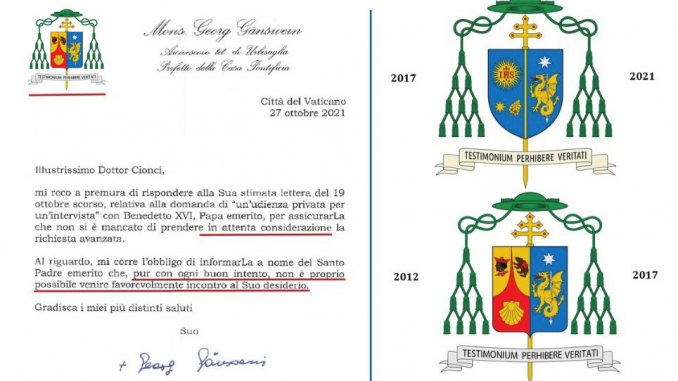
Let us go back to the controversy over Benedict XVI ‘s Declaratio, which was probably not a declaration of renunciation, but of a (Holy) See “impeded”, due to the total impossibility of exercising the petrine function.
Many, too many clues, in fact, now contribute to delineating a framework (also juridical) very different from the more common interpretation of the Ratzingerian text. Which could have literally unsettling effects.
A tangled knot, such as and more than the Gordian one could begin to finally come to be untangled. A knot that originated in February 2013, from the famous Declaration of Pope Ratzinger, immediately understood as the resignation of the Supreme Pontiff. Or perhaps misrepresented, since, as authoritative jurists have shown, if this hermeneutic is accepted, the document would be canonically and juridically invalid.
In a nutshell, these are the arguments, which paradoxically are the same used by “Bergoglian” canonists such as Monsignor Giuseppe Sciacca and Professor Geraldina Boni. There is only one Pope (there are no two Popes, nor an “enlarged” Papacy). Since 1983 the papal office is considered to be composed of two entities: the ‘munus’ (the divine title of Vicar of Christ) and the ‘ministerium’ (the practical exercise of power).
According to Canon 332 §2 of the Code of Canon Law, a Pontiff intending to abdicate must renounce the munus. However, in the Declaratio, Joseph Ratzinger stated to leave the ‘ministerium.’
An intricate skein which, however, is unravelled if the act is considered implying an impeded see – or rather of an impeded Holy See, which Canon 412 recognises when the diocesan Bishop is unable to exercise the pastoral office “because of imprisonment, confinement, exile or incapacity, not being able to communicate even by letter with his flock”.
This situation occurred, arguably, in 2013 as Pope Benedict was surrounded by internal enemies known as the St. Gallen Mafia and probably external ones, such as the ATM block on the Vatican Bank, while his private mail was leaked to the press in the Vatileaks scandal.
Therefore, if the mild German theologian has not really abandoned the throne of Peter, the first consequence is that he is still the Successor of the Apostle Peter. Ratzinger seems to be perfectly aware of this, since, for example, he still wears the white cassock, he signs himself PP (Pater Patrum) and he gives the apostolic blessing.
For those who support this argument, it would entail the nullity of the pontificate (and of all the provisions) of Pope Francis, whose line of succession inevitably becomes anti-papal.
The view is that Benedict XVI knows this rather well, as stated in a book by Peter Seewald titled ‘Last Conversations’.
In the text, Ratzinger admits the possibility of being the last Pope “as we have known up to now”, found in the so-called prophecy of Malachi.
In the meantime, as Professor Ratzinger himself prophesied back in 1969, the Church may have to “start over from its origins”.
Returning to the catacombs, and perhaps gathering around a “small remnant” like that of which St. Paul speaks in the Letter to the Romans. And it does not mean that it would not be much of a good thing.




Be the first to comment